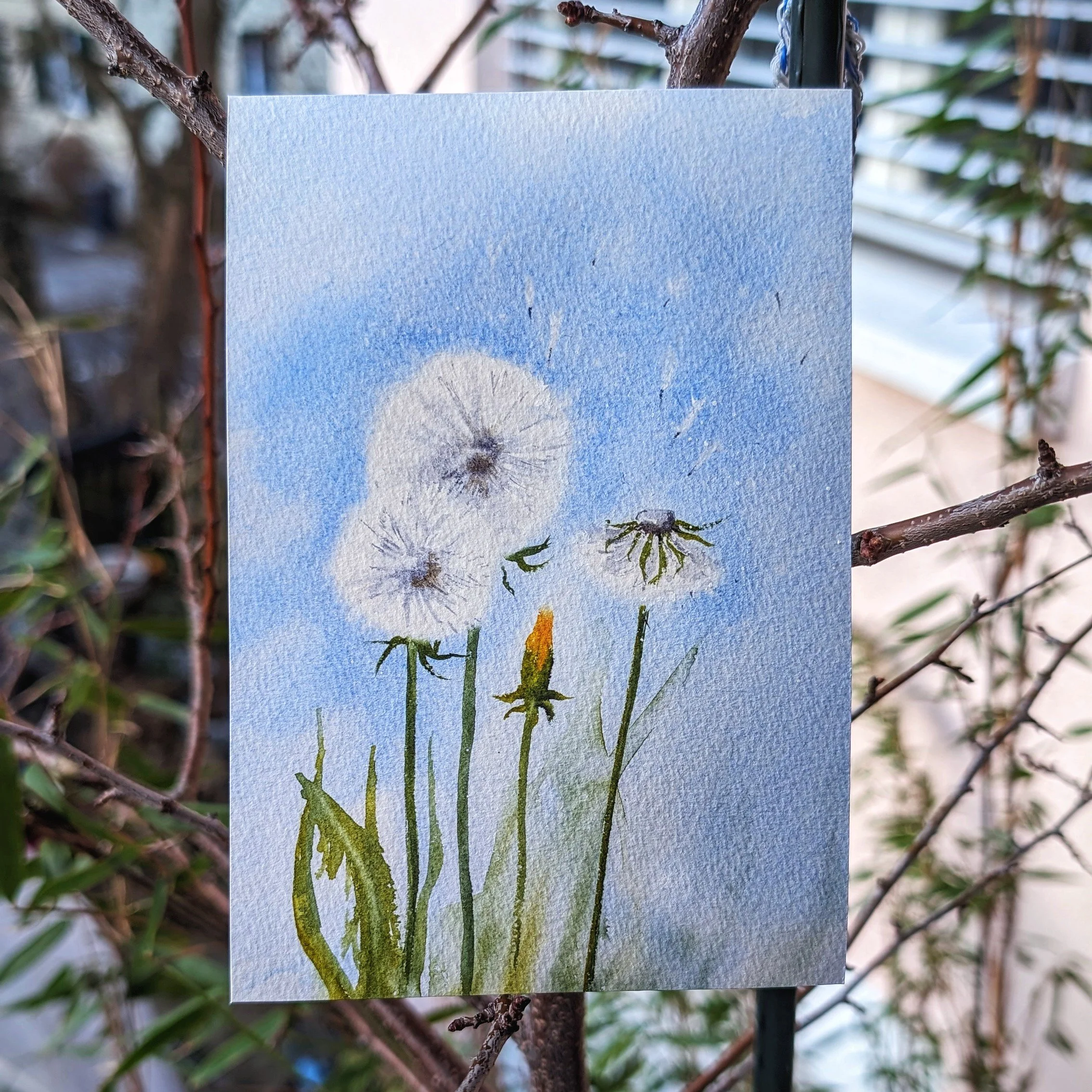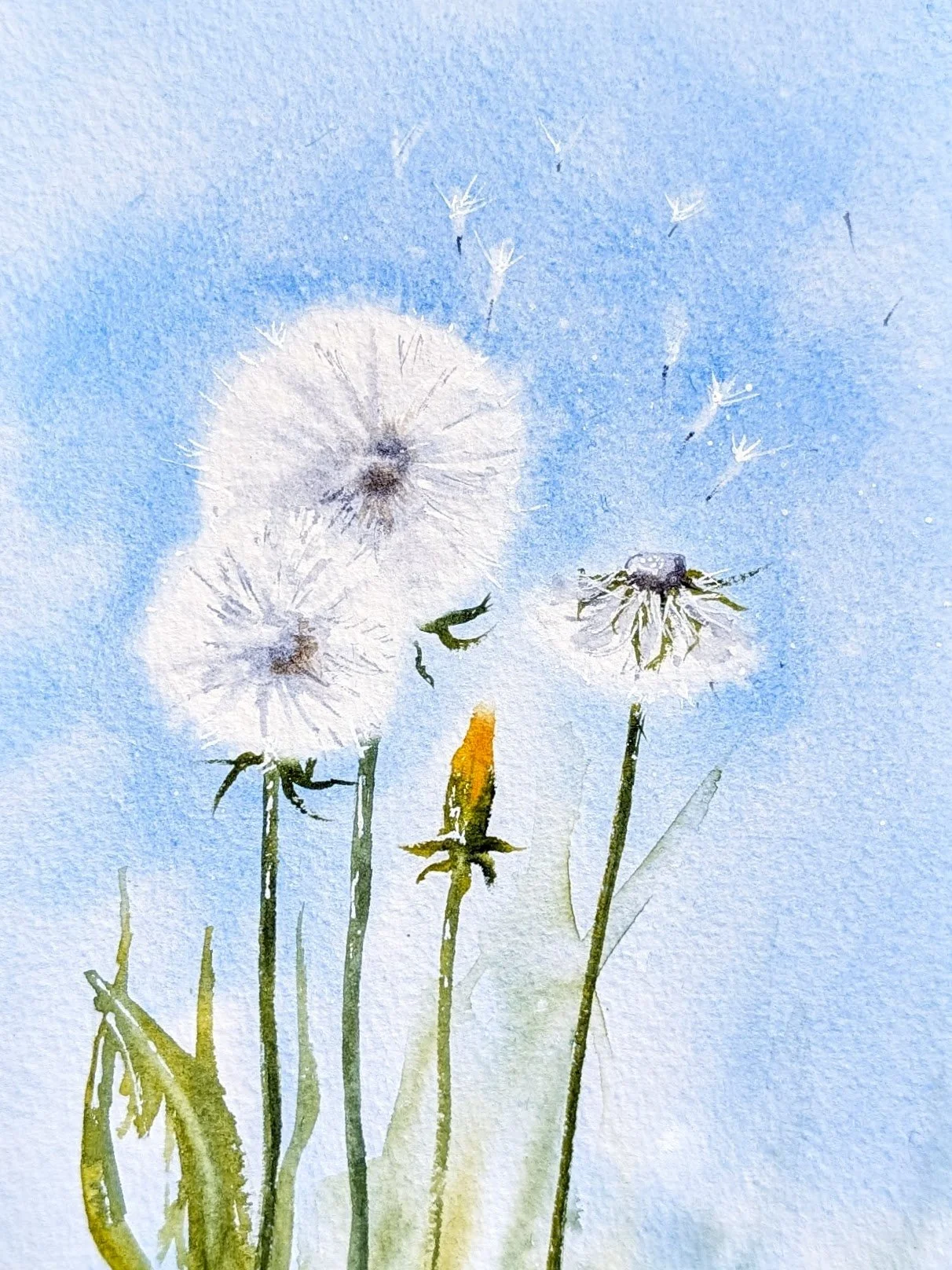Dandelion greeting card
Welcome to today's watercolor tutorial, where we'll explore the process of painting a dandelion.
With their whimsical appearance and airy charm, dandelions make for a perfect subject to brighten up any greeting card. In this step-by-step guide, we'll explore a simple yet effective way to paint a dandelion using watercolors. Whether you're a seasoned artist or just starting out, this tutorial is designed to be accessible and enjoyable for all skill levels.
Supplies I Used:
The exact supplies I used are not critical, but I've listed everything here:
100% cotton watercolor paper (11 cm x 16 cm);
watercolor paints. Colors I used: Cobalt blue (for the background), Paynes Grey (for the shadows), Olive green (for the leaves), Cadmium Yellow (for the flower);
round brush medium size, a small one for details, a flat one for erasing;
reference picture I used as an inspiration is here.
Begin by lightly sketching the general shapes of the dandelion flowers using a pencil. These outlines will serve as a guide to leave these areas white while painting the blue background around them.
Wet the paper thoroughly and allow it to absorb slightly into the fibers. Apply a light blue wash to the background, being careful to avoid the areas designated for the dandelions. Use an erasing technique with a clean, damp flat brush to correct any unwanted pigment and refine the shapes of the white flowers. Repeat this process as needed until the flowers have the desired shape.
Use Paynes grey to paint the centers and inner parts of the dandelion flowers.
For the green parts of the flowers, use olive green alone or mix it with a touch of blue to darken the shade. Add some semi-abstract leaves to enhance the composition. If desired, you can also include a single yellowy-green flower bud to provide a vibrant accent.
Add any additional details and consider splattering some paint for added texture and interest.
Below, you'll find images documenting some steps of the process, allowing you to follow along visually. Happy painting!







